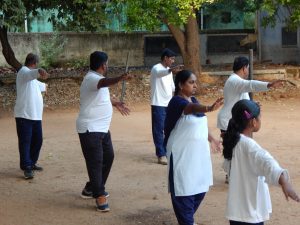While southern and economically advanced states have diabetes rates exceeding 30 percent, many central and north-eastern states record much lower prevalence.
Published Aug 11, 2025 | 7:00 AM ⚊ Updated Aug 11, 2025 | 9:23 AM

The study found higher income, higher education, and obesity strongly linked to increased diabetes risk.
Synopsis: Nearly one in three middle-aged and older adults in South India have diabetes, with Kerala and Puducherry being the worst affected according to a nationwide survey. Across India, 19.8 percent of people aged 45 and older are estimated to be living with the condition, with urban prevalence (30 percent) double that of rural areas (15 percent). The study highlights substantial gaps in diagnosis and treatment, with 40 percent of cases undiagnosed and only one state meeting any of the World Health Organization’s 2030 diabetes targets.
Nearly one in three middle-aged and older adults in South India are living with diabetes, with the southern states among the worst affected in the country, according to a new nationwide survey.
Kerala and Puducherry are the most severely affected, each with an age-adjusted prevalence of 36 percent. Tamil Nadu and Karnataka follow closely, with Tamil Nadu alone accounting for over 6 million people aged 45 and above living with the condition.
Across India, 19.8 percent of people aged 45 and older – about 5.04 crore people – are estimated to have diabetes.
The study, published in The Lancet Global Health, analysed data from nearly 58,000 people across India between 2017 and 2019 as part of the Longitudinal Ageing Study in India (LASI). It represents the most detailed state-by-state mapping of diabetes in the country to date.
While southern and economically advanced states have diabetes rates exceeding 30 percent, many central and north-eastern states record much lower prevalence.
“Our study provides updated, nationally representative and state-representative data of diabetes prevalence, awareness, treatment, and control using HbA1c concentrations among middle-aged and older adults in India,” the researchers said.
Urban areas show particularly worrying trends, with prevalence at 30 percent – double the rural rate of 15 percent.
One of the most striking findings is the strong positive correlation between state-level economic development and diabetes prevalence. States with higher per capita GDP consistently show higher rates of diabetes, creating what researchers describe as a “prosperity paradox”, where economic success brings new health challenges.

People practise the low-impact technique. A recent study of studies said that tai chi can help in diabetes regulation (Tai Chi Federation of India)
The study found higher income, higher education, and obesity strongly linked to increased diabetes risk. Among obese individuals (BMI ≥25 kg/m²), prevalence was 34.6 percent, compared with 7.3 percent among those who were underweight. Those with secondary education or higher had a crude diabetes prevalence of 29.2 percent, compared with 15.1 percent among those with no education.
“The variation in diabetes prevalence across states reinforces the notion that India’s states are ‘nations within a nation’ with different trajectories of diabetes burdens, partly reflecting different levels of economic development,” the study’s authors noted.
“Across individuals, we found strong associations between diabetes and individual-level characteristics of urban residence, higher education, and proxy measures of better economic status. Our recent data support the notion that India continues to be at a stage in the nutrition transition characterised by greatest diabetes prevalence among higher socioeconomic groups.”
This pattern reflects how traditional diets and active lifestyles are giving way to calorie-rich foods and sedentary behaviours as economic conditions improve.
“In the context of ongoing economic development and epidemiological transition in India, our results might reflect a continuation of this upward trend,” the researchers observed, noting that the country’s economic gains are also driving a health crisis.
Perhaps the most alarming aspect of the diabetes epidemic is not only its scale but also the large gaps in awareness and treatment, leaving millions vulnerable to serious complications.
The study found that 40 percent of people with diabetes – about 20 million individuals – are completely unaware they have the condition.
“Approximately 40 percent of people with diabetes were unaware of their condition,” the researchers said.
“Among those who were aware of their diabetes, depending on the definition of the target, 46–60 percent achieved glycaemic control, 28–59 percent achieved blood pressure control, and 6–7 percent were taking a lipid-lowering medication.”
These figures highlight a serious shortfall in diabetes care, putting millions at risk of kidney disease, blindness, and heart problems.
The World Health Organization’s Global Diabetes Compact has set ambitious targets for 2030, but India’s performance is far behind.
“In 2021, the WHO Global Diabetes Compact released worldwide targets for 2030 that at least 80 percent of people with diabetes are diagnosed, and out of those with a diagnosis, at least 80 percent achieve glycaemic control,” the researchers noted.
“Only one state in LASI achieved any of the four recommended targets in the WHO Global Diabetes Compact. Arunachal Pradesh achieved the target for HbA1c concentration less than 8.0 percent among those with diagnosed diabetes.”
The low use of lipid-lowering medications is a particular concern.
“The fact that fewer than one in ten people with diagnosed diabetes reported using lipid-lowering medications such as statins is also noteworthy,” the researchers said.
“Our findings suggest that considerable progress must be made towards these national targets to achieve them in the proposed timeline.”
The diabetes epidemic is unfolding alongside rapid demographic changes that threaten to worsen the crisis in coming decades.
The study’s focus on adults aged 45 and above provides key insights into how an ageing population will interact with diabetes prevalence to create unprecedented health challenges.
“The finding of greater diabetes prevalence in older age groups is important given that India’s population is rapidly ageing,” the researchers emphasised.
“These demographic shifts suggest that, in the coming years, the total number of middle-aged and older adults with diabetes will increase even if the rise in age-specific diabetes prevalence can be halted.”
The study’s methodology – using glycated haemoglobin (HbA1c) measurements rather than relying only on self-reported diagnoses – offers a more accurate estimate of diabetes prevalence than many previous studies.
“Our study showed greater age-stratified and sex-stratified diabetes prevalence in India than observed in most previous studies that used population data from multiple states or meta-analytical methods,” the researchers observed.
The economic implications are significant.
“Diabetes affects approximately 20 percent of the middle-aged population in India, yet the ineffective disease control reported in our study for this group bodes poorly in terms of shortened life expectancy, risk of disability, and reduced economic output as these individuals age,” the researchers warned.
The decentralised nature of India’s health system adds complexity to any attempts at tackling the problem.
“The Indian health system is decentralised, and thus an implication of our study is the need to tailor the policy responses proposed in this plan to each Indian state while also ensuring coordination mechanisms across states,” they noted.
The study also highlights the importance of regular population-based surveys to monitor progress.
“As both a nationally representative and state-representative survey of diabetes prevalence and care, our survey also reinforces the need for periodic population-based surveys to assess progress towards national and global diabetes targets,” the authors said.
The research was conducted in the years just before and during the COVID-19 pandemic, which disrupted access to healthcare.
“Our survey was conducted in the years immediately preceding and during the COVID-19 pandemic, which has disrupted access to health care and healthy lifestyle patterns of adults with chronic diseases including diabetes in India,” the researchers noted.
“Future studies are needed to understand the population-level impact of COVID-19 on prevalence and care of diabetes in India.”
(Edited by Dese Gowda)
